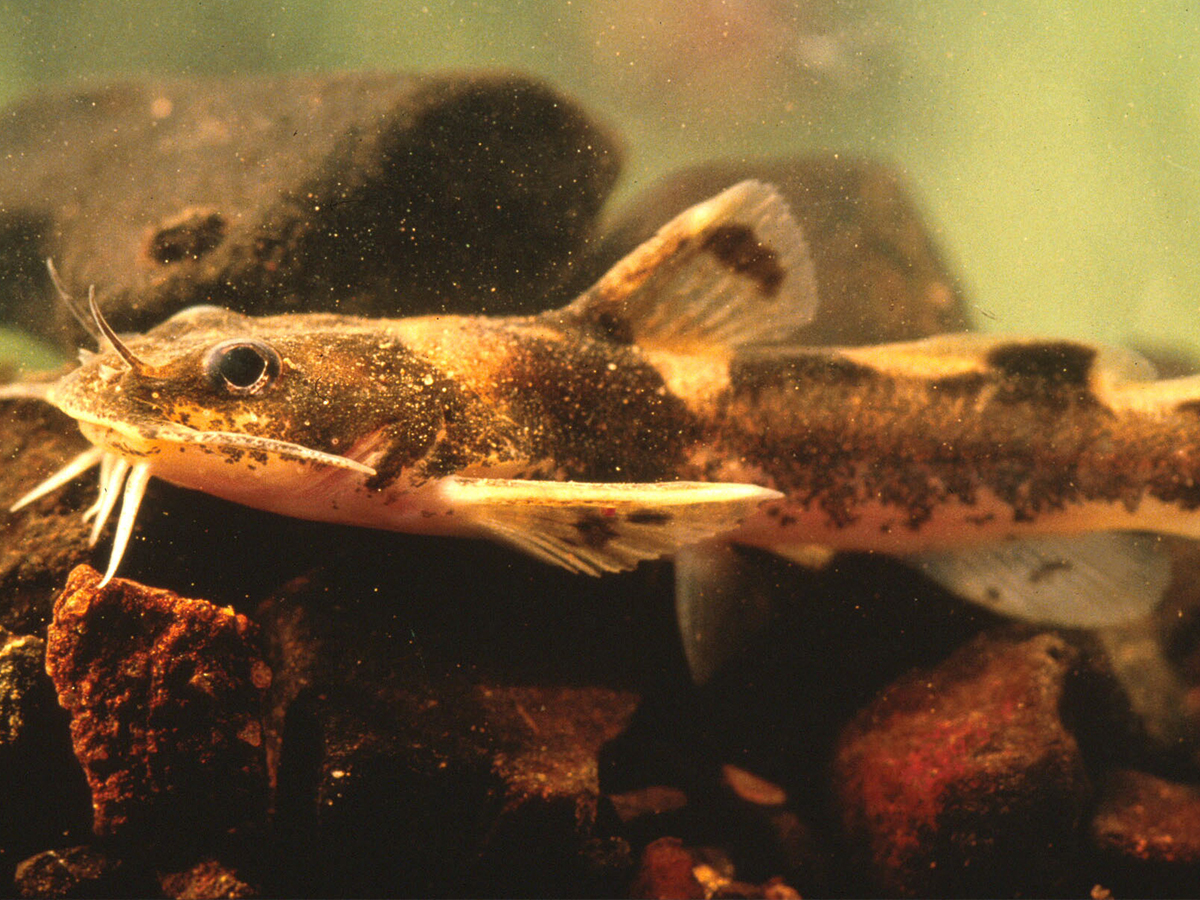
Carolina Madtom
Carolina Madtoms are a federally endangered species of catfish with only two known populations in existence, one in the Neuse River and one in the Tar River. Small but mighty, this tiny fish only grows to about 5 inches in length but the stinging spines in its pectoral fins pack a punch! This species has declined due to the degradation of its habitat.
Learn more:
- Classroom Activities
- USFWS Species Profile
- Mad for Madtoms Educator Trek
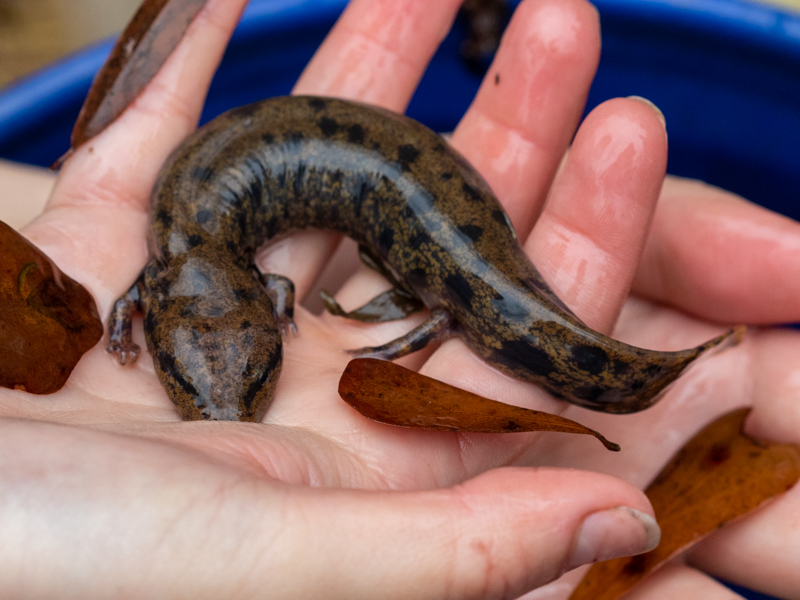
Neuse River Waterdog
The Neuse River Waterdog is one of the rarest species of salamander in the Southeast, found only in the Neuse and Tar-Pamlico River Basins of North Carolina. This large aquatic salamander can live as long as 30 years and sports bright red feathery gills on the sides of its head. Neuse River Waterdogs are listed as a federally threatened species; a major threat to the species is habitat degradation, primarily due to stream sedimentation.
Learn more:
- Classroom Activities
- USFWS Species Profile
- Waterdog Warriors Educator Trek
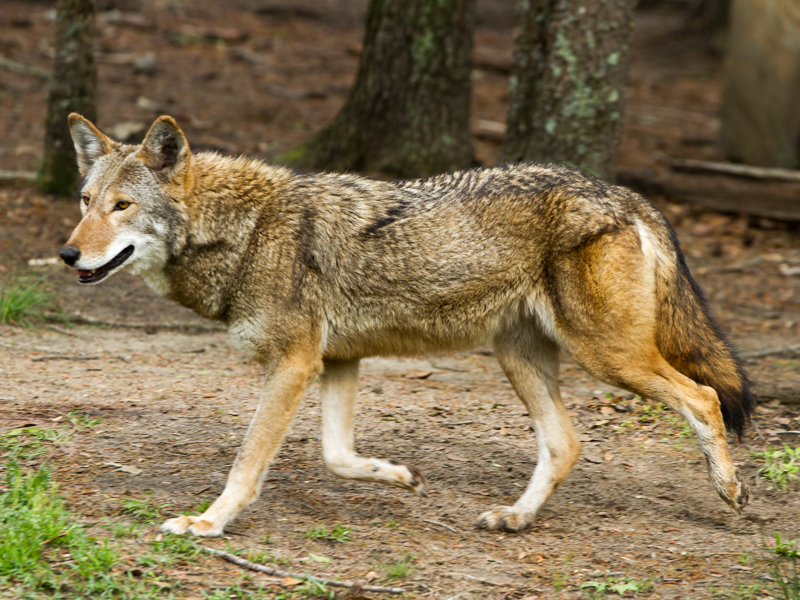
Red Wolf
Did you know that a wild population of the world’s most endangered wolf is found in eastern North Carolina, where red wolves were reintroduced in 1987? The range of red wolves once extended from the Mid-Atlantic states to Florida and as far west as Missouri and Texas until predator control programs and habitat loss reduced their numbers; now less than 20 red wolves live in their native habitat in eastern NC.
Learn more:
- Classroom Activities
- USFWS Species Profile
- Where Swans Fly, Bears Walk, and Wolves Howl Educator Trek
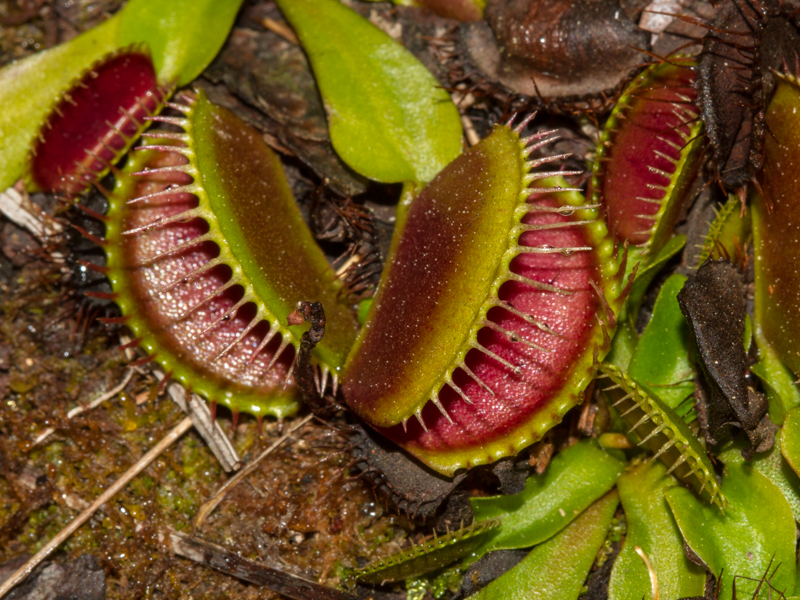
Venus Flytrap
The Venus flytrap is one of the most widely recognized carnivorous plants on Earth. But did you know that it only grows in the wild within about 100 miles of Wilmington, NC? It is considered a state threatened species in North Carolina as habitat loss and fire suppression impact where it grows in the wild.
Learn more:
- Classroom Activities
- USFWS Species Profile
- Plants That Bite Back Educator Trek
- Friends of Flytraps Restoration Project: This partnership with Carolina Beach State Park provides an opportunity for classrooms to raise and plant flytraps as part of ongoing restoration efforts. Contact Danielle Pender for more information.
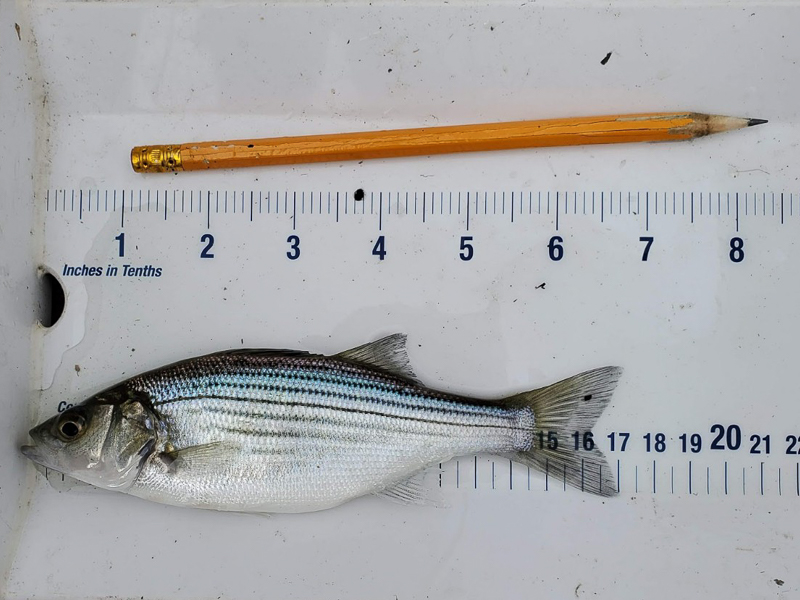
Striped Bass (Rockfish)
Striped Bass is commonly known as rockfish in North Carolina. It is an anadromous migratory fish that lives most of its life in the ocean, but swims up all of North Carolina’s river systems to spawn. Striped Bass are considered an indicator species, as their well-being is tied to the health of their environment, including water quality and prey availability. Although the Striped Bass does not have a legal imperilment designation, multiple factors have led to a significant decline in the wild population.
Learn more:
- USFWS Species Profile
- School of Rockfish Restoration Project: This project provides an opportunity for classrooms to raise and release striped bass fry as part of ongoing restoration efforts. Contact Danielle Pender for more information.

American Shad
The American Shad is a migratory fish that used to be abundant in all river systems in North Carolina. This anadromous fish spawns in freshwaters and lives most of its life in the ocean and is a very important part of the food web in North Carolina rivers. Today, American Shad numbers are much lower than they were historically due to overfishing, dam construction, and water pollution.
Learn more:

